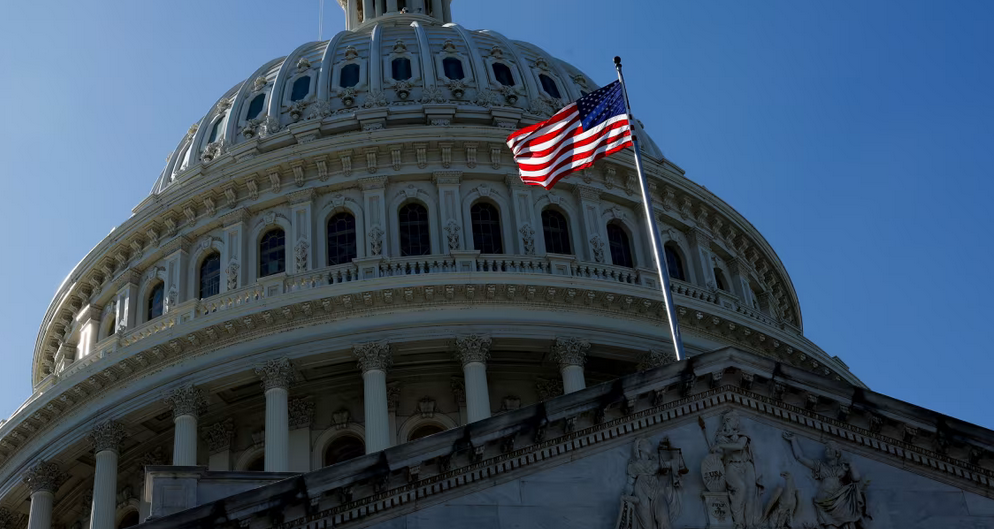Here are the key motivations and dynamics at play:
- Budget and policy leverage
The controlling party (in this case, Republicans with Trump’s administration) often uses the threat of a shutdown to force concessions from the opposition (here, Democratic senators/representatives) on policy issues. In this case, one sticking point is healthcare subsidies / Affordable Care Act (ACA) support. Democrats are pushing to extend or preserve subsidies, while Republicans are resisting including them in a short-term funding bill. - Agenda of reduced government and deregulation
The Trump administration is reportedly seeing the shutdown as an opportunity to reshape federal agencies, enforce mass layoffs, and more aggressively cut or restructure government programs and regulatory regimes.
Some internal memos instruct agencies to plan for mass layoffs or to suspend programs that lack “mandatory funding.” - Partisan stalemate & Senate dynamics
Even though Republicans control the House and Senate, they still need a 60-vote threshold in the Senate to overcome filibuster or procedural blocks. Democrats are using that leverage to force inclusion of their demands (e.g. on healthcare) in any continuing funding resolution.
The inability to compromise means the funding deadline expires without agreement, triggering a lapse. - Threats and pressure tactics
The Trump administration is openly threatening “irreversible” cuts and mass firings if the shutdown takes effect, presumably to pressure Democrats into capitulating.
So essentially: the shutdown is a high-stakes negotiation tactic wrapped around policy battles (especially healthcare) plus an ideological drive to reduce government scope.
What are the implications for the U.S. economy?
A government shutdown’s economic impact depends heavily on its duration, which agencies are shut down, and how businesses and households respond. Some effects are immediate; others build over time. Below is a breakdown of likely consequences, both short-term and more persistent.
Short-term / immediate effects
- Furloughs of federal employees / wage disruption
Many nonessential federal workers will be furloughed (i.e. required to stop working) or required to work without immediate pay in “essential” roles.
Even though Congress often approves retroactive pay once the shutdown ends (via statutes like the Government Employee Fair Treatment Act), workers still feel immediate cash-flow stress, reducing consumption. - Reduced consumer spending & local knock-on effects
Because furloughed workers have less income in the short term, their reduced spending ripples through local economies (retail, services, etc.).
Some of that lost spending may not be fully recouped even after pay is restored. - Disruption in government services / delays
Many federal services and operations are suspended or reduced: e.g. delays in permitting, licensing, grant disbursements, regulatory oversight, and services in administrative agencies.
Example: the U.S. Travel Association estimates a shutdown could cost the travel industry $1 billion per week by disrupting flights, closing national parks, etc.
Some agencies processing education, student loans, or grants may be partly shut, though core functionalities may continue short term. - Lost output (GDP drag)
Because government spending is a component of GDP, the immediate cutback in activity drags on total output. Goldman Sachs estimates a 0.15 percentage point reduction in GDP growth per week of shutdown (just from federal spending), rising to ~0.2 percentage point per week once private-sector ripple effects are included.
In fact, Brookings notes that short shutdowns are more a growth hiccup than a structural hit, but a prolonged one can produce nontrivial losses. - Impact on data, forecasts & monetary policy
Some economic data collection is performed by federal agencies (e.g. Bureau of Labor Statistics, Census) and may pause or be delayed during shutdowns, making it harder for the Federal Reserve and market participants to assess the economy.
That uncertainty can make policy-making (e.g. interest rate decisions) more difficult. - Market and investor confidence / risk premia
Uncertainty from political dysfunction can erode confidence, raise risk premiums, and lead to increased volatility in financial markets.
However, because a shutdown does not itself impede the Treasury’s ability to service debt or issue new debt (in most cases), the market reaction is often muted unless combined with a debt ceiling crisis.
Medium- to longer-term / cumulative effects if shutdown drags on
- Greater lasting economic loss: The longer the shutdown lasts, the more permanent the loss of output becomes: delayed contracts, halted investments, irreversible business disruptions.
- Delays in regulatory approvals / infrastructure projects: Projects that depend on federal approvals or funding could stall or face cost overruns.
- Reputational / credibility damage: Persistent dysfunction could weaken confidence in U.S. governance, affecting foreign investment and sovereign credit outlook.
- Fiscal cost and back payments: When the government reopens, retroactive pay to furloughed workers, administrative backlogs, and other costs add up (these are “make-whole” obligations).
- Potentially higher borrowing costs or downgraded credit outlook: In extreme cases, ratings agencies might penalize perceived fiscal instability.
- Policy misalignment: If data is missing or delayed, future policies (monetary, fiscal) might be less well calibrated, compounding macro risk.
How big might the impact be?
- In the 2018–2019 shutdown (35 days), the Congressional Budget Office estimated a ~$3 billion direct cost (≈ 0.02 % of GDP) from federal paybacks and lost revenues.
- Some estimates (e.g. from travel sector) suggest $1 billion lost per week in economic activity for affected sectors.
- Goldman Sachs’ models suggest each additional week can shave off 0.15 to 0.2 percentage points from growth.
- The Atlantic Council notes that shutdowns may imperil bond markets, investor confidence, and the Fed’s ability to gauge the economy.
So, while a short shutdown (a few days) would be painful but manageable, a multi-week or longer shutdown could impose nontrivial drag on U.S. economic growth, dampen consumer/business sentiment, and create policy complications.








